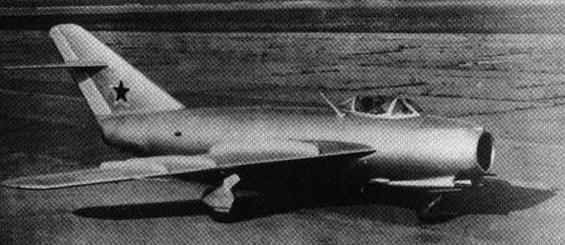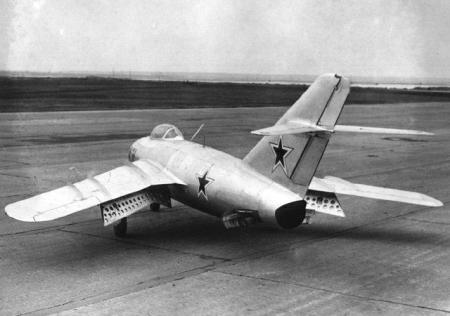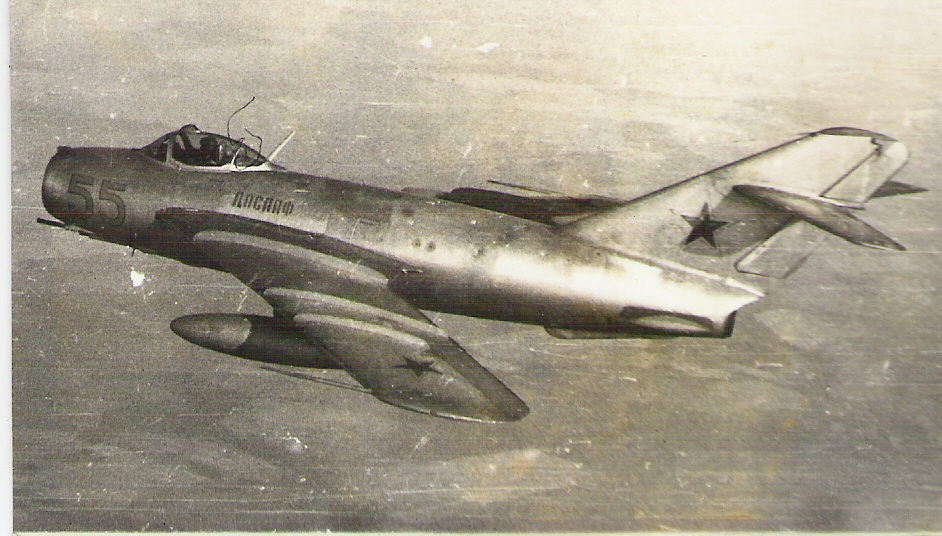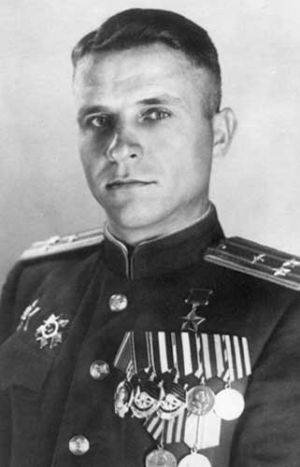
14 January 1950: The Mikoyan Gurevich prototype fighter I 330 SI made its first flight with test pilot Ivan Ivashchenko. It would be developed into the MiG 17.
The MiG 17 was an improved version of the earlier MiG 15. It was a single-seat, single engine fighter armed with cannon, and capable of high subsonic and transonic speed.

The prototype’s wings were very thin and this allowed them to flex. The aircraft suffered from “aileron reversal,” in that the forces created by applying aileron to roll the aircraft about its longitudinal axis were sufficient to bend the wings and that caused the airplane to roll in the opposite direction.
The first prototype I 330 SI developed “flutter” while on a test flight, 17 March 1950. This was a common problem during the era, as designers and engineers learned how to build an airplane that could smoothly transition through the “sound barrier.” The rapidly changing aerodynamic forces caused the structure to fail and the horizontal tail surfaces were torn off. The prototype went into an unrecoverable spin. Test pilot Ivashchenko was killed.
Two more prototypes, SI 02 and SI 03, were built. The aircraft was approved for production in 1951.
More than 10,000 MiG 17 fighters were built in the Soviet Union, Poland and China. The type remains in service with North Korea.


Ива́н Тимофе́евич Ива́щенко (Ivan T. Ivashchenko) was born at Ust-Labinsk, Krasnodar Krai, Russia, 16 October 1905. He served in the Red Army from 1927 to 1930. He graduated from the Kuban State University in 1932.
Ivashchenko was trained as a pilot at the Lugansk Military Aviation School at Voroshilovgrad, and a year later graduated from the Kachin Military Aviation College at Volgograd.
In 1939, he fought in The Winter War. During the Great Patriotic War, Ivan Ivashchenko flew with a fighter squadron in the defense of Moscow.
From 1940 to 1945, Ivan Ivashchenko was a test pilot. He trained at the M.M. Gromov Flight Research Institute at Zhokovsky, southeast of Moscow, in 1941. He was assigned to Aircraft Factory No. 18 at Kuibyshev (Samara) from 1941 to 1943. Ivashchenko flew the Ilyushin Il-2 Sturmovik fighter bomber extensively. From 1943 to 1945 he was a test pilot for Lavochkin OKB at Factory 301 in Khimki, northwest of Moscow.
In 1945 Ivashchenko was reassigned to OKB Mikoyan, where he worked on the development of the MiG 15 and MiG 17 fighters. He participated in testing ejection seat systems and in supersonic flight.
Ivan T. Ivashchenko was a Hero of the Soviet Union, and was awarded the Order of Lenin, Order of the Red Banner (two awards) and Order of the Patriotic War. Killed in the MiG 17 crash at the age of 44 years, he was buried at the Novodevichy Cemetery in Moscow.
© 2017, Bryan R. Swopes